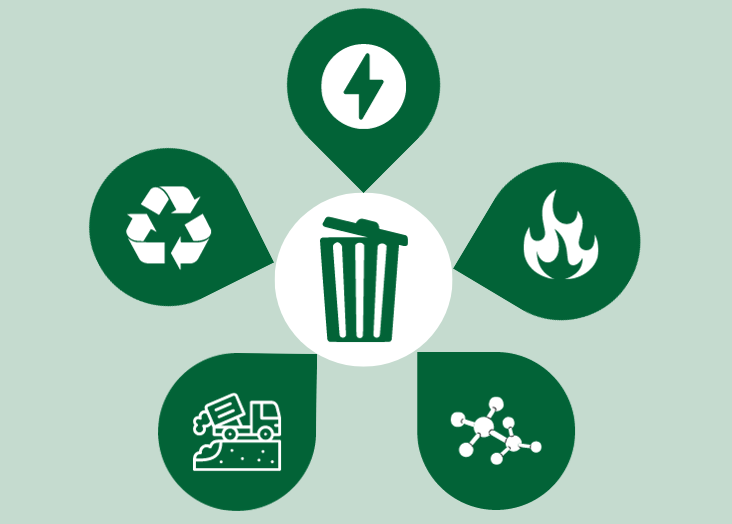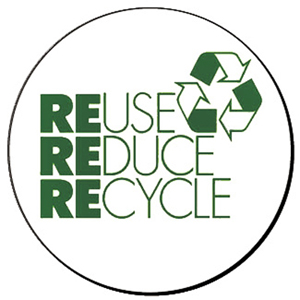Obtain Involved with Recycling Lives Services for a Greener Future
Obtain Involved with Recycling Lives Services for a Greener Future
Blog Article
Exploring Various Kinds Of Waste in Modern Waste Administration Systems
The contemporary landscape of waste management entails navigating a complicated variety of waste types, each requiring specialized handling and disposal approaches to reduce environmental impacts. Municipal strong waste, unsafe waste, digital waste, and natural waste each present distinctive obstacles and chances for source recovery.
Local Solid Waste
Local solid waste, typically referred to as home garbage or rubbish, incorporates a variety of thrown out materials generated by domestic, commercial, and institutional resources within a municipality. This waste stream commonly includes items such as product packaging, food scraps, yard trimmings, paper, plastics, fabrics, and discarded family goods. The management of local solid waste is a vital element of city planning and public wellness, necessitating effective collection, transport, and disposal systems.
Efficient waste administration systems are developed to decrease environmental impact while making best use of resource recuperation. This typically entails a mix of approaches including recycling, landfilling, and composting. Reusing programs target products like paper, glass, metals, and particular plastics, diverting them from landfills and reintroducing them right into the manufacturing cycle. Composting natural waste, such as food scraps and yard trimmings, not only lowers landfill usage however also produces useful dirt amendments.
Municipalities must likewise resolve the logistical and economic difficulties connected with waste monitoring. Executing pay-as-you-throw systems, enhancing public awareness, and buying modern technology can substantially enhance waste diversion rates. By integrating these methods, towns can foster sustainable neighborhoods, decrease greenhouse gas discharges, and preserve natural deposits.
Hazardous Waste

Effective hazardous waste monitoring includes several important actions: recognition, partition, disposal, and treatment. Partition guarantees that dangerous materials are stored separately from non-hazardous waste to avoid cross-contamination.
Regulative structures, such as the Resource Conservation and Recovery Act (RCRA) in the USA, provide guidelines and criteria for contaminated materials administration. Adherence to these guidelines, combined with improvements in waste treatment technologies, is important in mitigating the threats connected with contaminated materials.
Digital Waste
Digital waste, typically referred to as e-waste, represents a quickly expanding difficulty in waste administration systems internationally. This sort of waste encompasses thrown out electronic tools and tools such as mobile phones, computers, tvs, and other electronic home appliances. The rapid speed of technological advancement, combined with reducing product life expectancies and consumer need for the current tools, has actually significantly increased the volume of e-waste generated annually.
E-waste is especially problematic because of its complex structure, typically including hazardous compounds like cadmium, lead, and mercury, which position considerable environmental and wellness risks otherwise effectively managed. On the other hand, e-waste also includes useful products such as copper, silver, and gold, which can be recovered and recycled. The double nature of e-waste-- both harmful and beneficial-- necessitates specialized handling, reusing, and disposal procedures.
Effective e-waste monitoring entails stringent governing frameworks, robust collection systems, and advanced recycling innovations. Public recognition and participation are important, as incorrect disposal methods, such as unlawful dumping and informal recycling, intensify environmental contamination and health risks. Enhancing e-waste administration practices is essential for minimizing ecological influence and recuperating valuable sources in a significantly digital world.

Organic Waste
Organic waste, comprising cooking area scraps, lawn trimmings, and agricultural residues, stands for a significant part of the global waste stream. This sort of waste is naturally degradable, indicating it can be broken down by microorganisms into simpler natural compounds. In spite of its capacity for natural decay, improper monitoring of organic waste can bring about unfavorable environmental impacts, consisting of the exhaust of greenhouse gases such as methane, which add to environment change.
Efficient administration of natural waste is essential for decreasing these environmental influences (recycling lives services). Composting is a widely taken on technique, transforming natural waste right into nutrient-rich garden compost that can enhance soil wellness and agricultural productivity. Furthermore, anaerobic food digestion is an emerging innovation that converts natural waste right into biogas, a renewable energy source, and digestate, which a knockout post can be utilized as plant food
Municipalities and waste monitoring entities should execute durable natural waste collection and therapy programs to make the most of the benefits of these processes. Public education projects can additionally play a pivotal function in motivating families and services to different organic waste from various other sorts of waste. By focusing on the administration of organic waste, cultures can minimize garbage dump usage, reduced greenhouse gas emissions, and create valuable byproducts for farming use.

Innovative Waste Management
In the world of waste monitoring, cutting-edge methods are changing exactly how cultures manage their refuse, going for sustainability and efficiency. These improvements incorporate a variety of technologies and practices that enhance recycling rates, decrease garbage dump dependence, and reduced ecological influence. One noticeable development is the execution of smart waste bins outfitted with sensing units that check fill levels and enhance collection courses. This not just minimizes fuel consumption yet also decreases greenhouse gas exhausts.
One more remarkable growth is the fostering of waste-to-energy (WtE) innovations. By converting non-recyclable waste into functional power via processes such as incineration and anaerobic food digestion, WtE minimizes garbage dump burden and gives a renewable resource resource. In addition, innovations in chemical recycling permit for the malfunction of complicated plastics into their original monomers, allowing the creation of brand-new, top notch plastic products.
In addition, the circular economic climate model is obtaining traction, highlighting the design of products and systems that prioritize reusability and resource effectiveness. This all natural method urges industries to reduce waste generation from the start. Through these cutting-edge strategies, contemporary waste administration systems are not just resolving the immediate obstacles of waste disposal but likewise leading the way for a much more lasting future.
Verdict
An extensive understanding of local strong waste, contaminated materials, electronic waste, and natural waste, paired with the execution of ingenious waste monitoring solutions, is imperative for reducing environmental effects. Integrating modern technologies such as smart waste bins and waste-to-energy systems can enhance efficiency and sustainability. Effective waste administration strategies not just foster resource recovery but also promote public understanding and involvement, eventually adding to site here the growth of a circular economy.
The contemporary landscape of waste management entails browsing a complex range of waste types, each requiring specialized handling and disposal methods to minimize ecological influences. Municipal strong waste, unsafe waste, digital waste, and natural waste each present unique difficulties and chances for resource recovery.Digital waste, commonly referred to as e-waste, represents a rapidly expanding obstacle in waste administration systems internationally. With these cutting-edge approaches, contemporary waste monitoring systems are not just dealing with the instant difficulties of waste disposal however also leading the method for a more sustainable Look At This future.
An extensive understanding of community strong waste, harmful waste, electronic waste, and natural waste, coupled with the implementation of innovative waste administration services, is necessary for alleviating environmental impacts. (recycling lives services)
Report this page